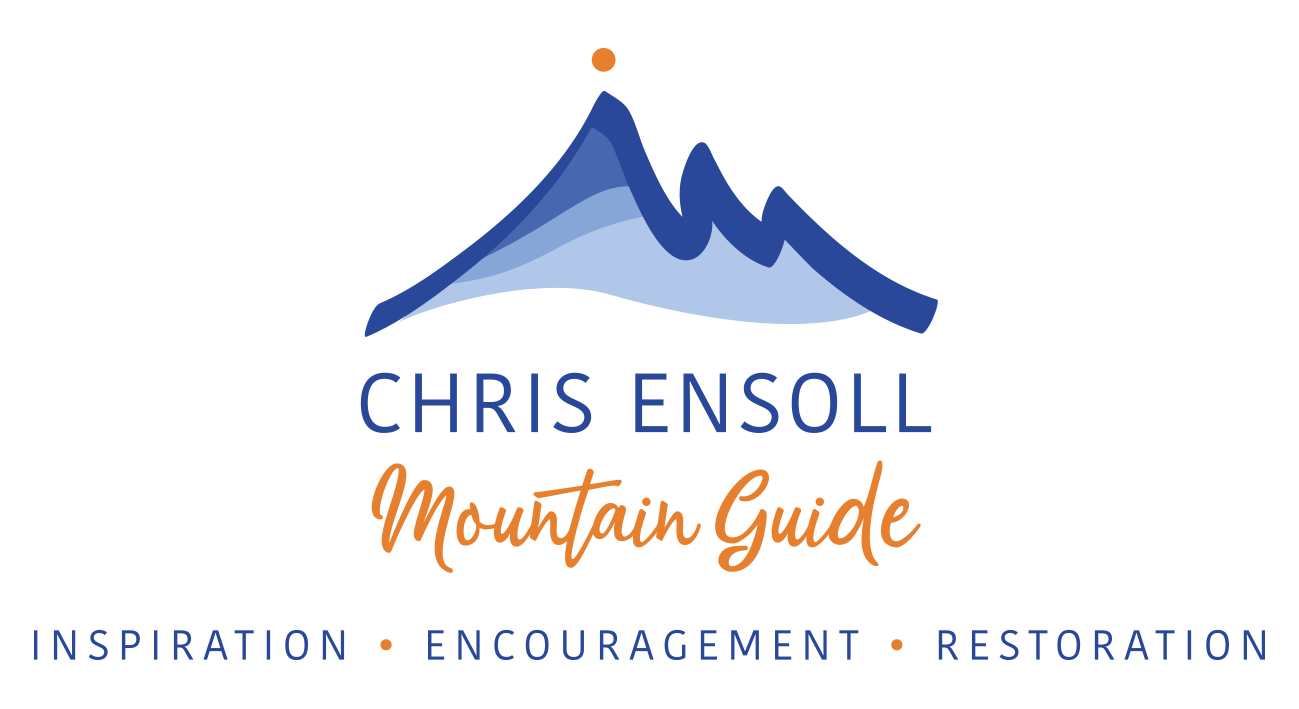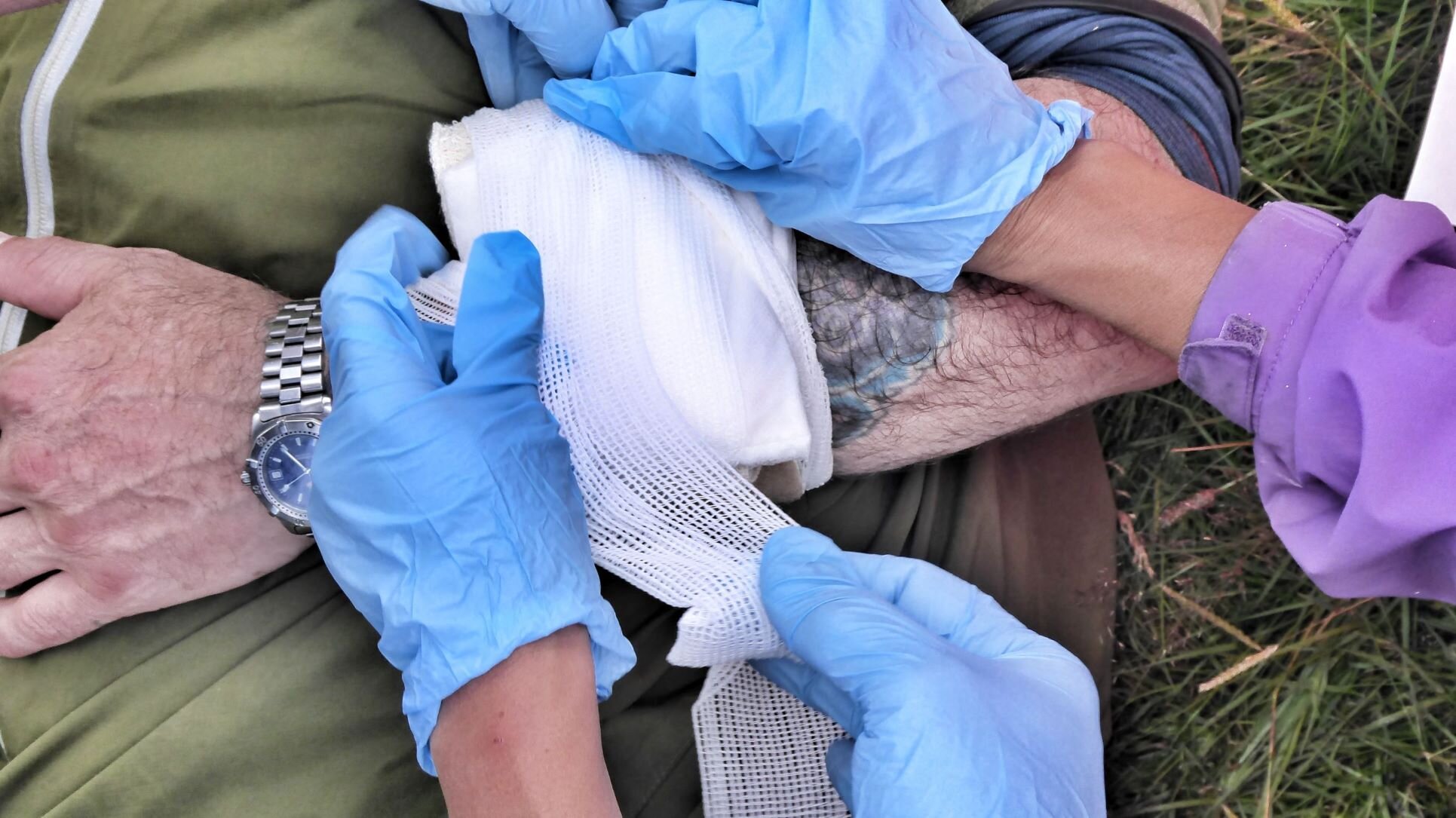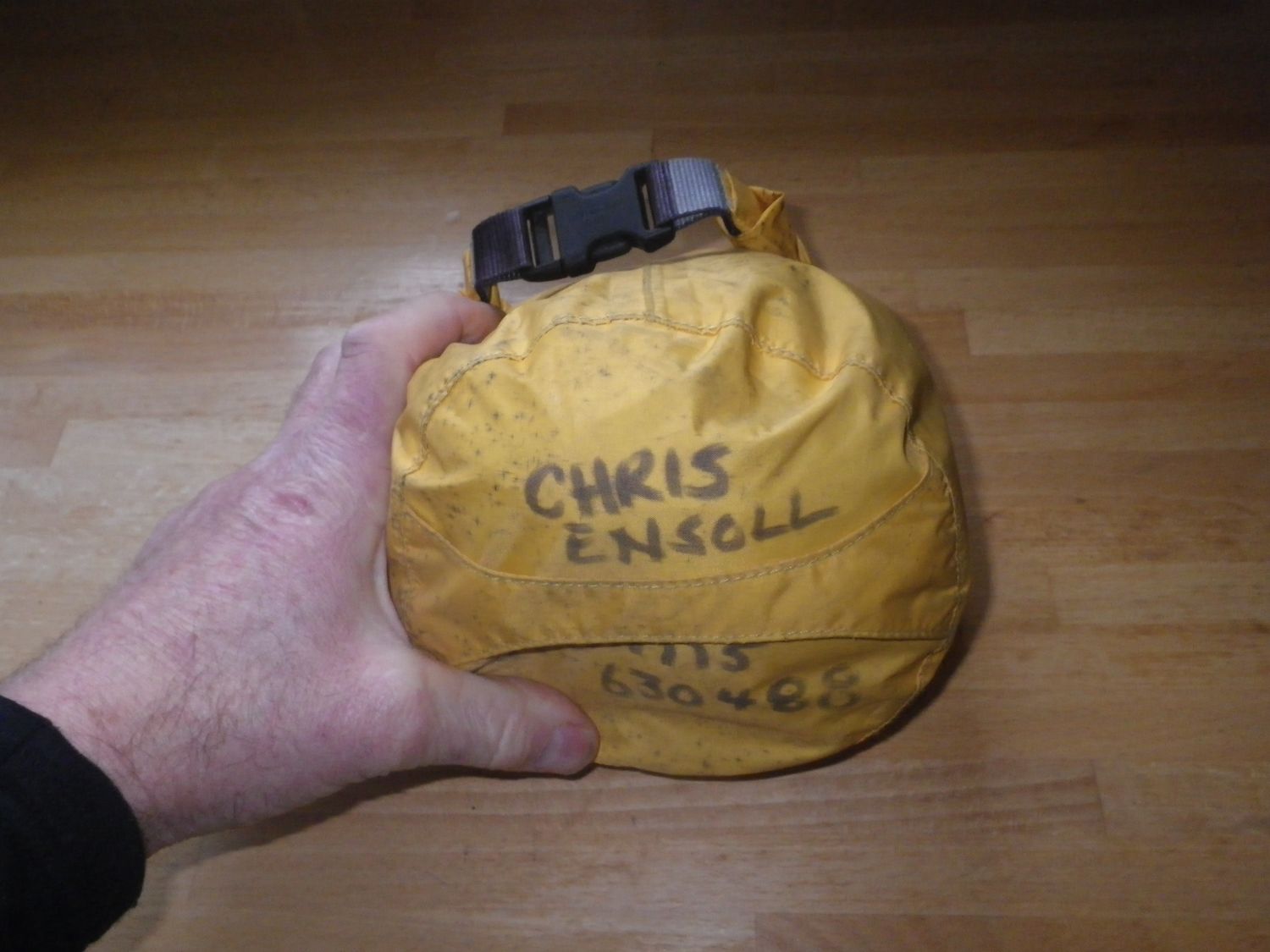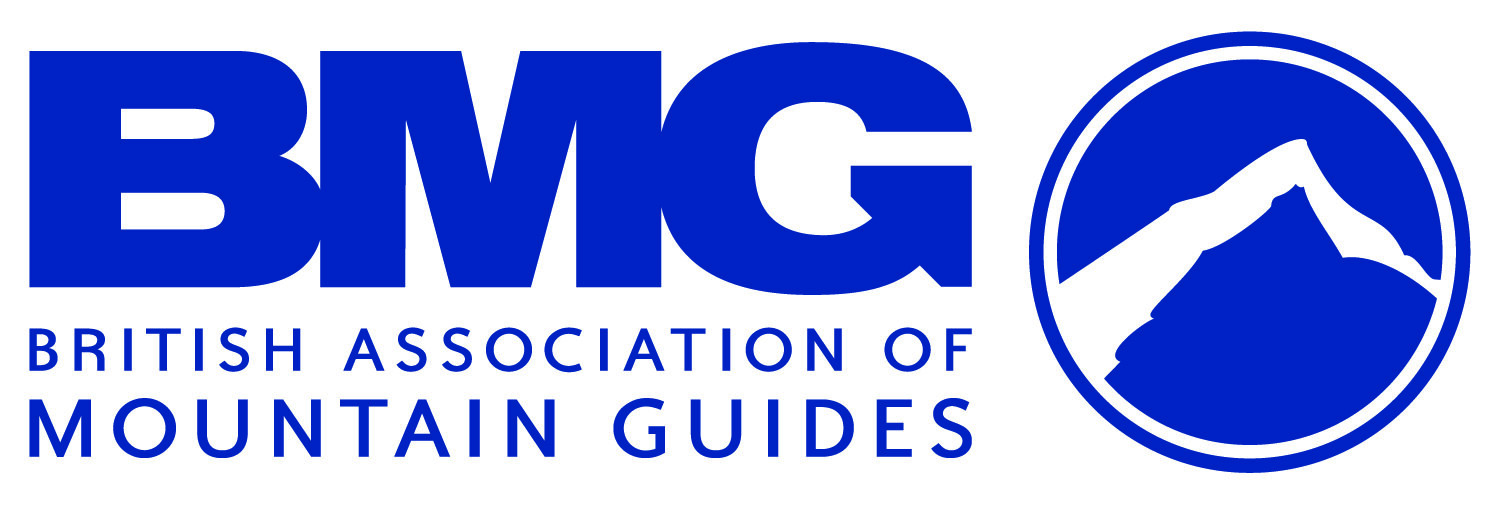First Aid Kit Comparison: The Minimalist vs The First Aid Trainer
/WRITTEN by CHRIS & ANNE ENSOLL and KELVYN JAMES
The first part of this post was originally published in January 2019 as So What Do I Carry In My First Aid Kit.
If you’ve been in the mountains with me, or you’re a regular blog reader, you’ll know that I am a minimalist when it comes to packing a rucksack. Whatever I am doing, from guiding in the Alps to walking in to a crag on a Rock Climbing Instructor course, I don’t want to be carrying any unnecessary weight. And that applies to my first aid kit too. Over the years I have whittled it down to the things I know are absolutely essential, and I’ve ditched everything else. But not everyone has the same philosophy. Kelvyn James is on our freelance team, and he has featured in our My Story series. He runs his own business, which includes delivering first aid courses. He has a totally different approach to his first aid kit, so we thought it would be fun and informative to do a comparison.
Photo credit: Kelvyn James
The Minimalist - Chris Ensoll
This is what you’ll see in my first aid kit:
2 Melolin-type wound dressing pad 10cm x 10cm
4 Melolin-type wound dressing pad 5cm x 5cm
1 trauma dressing 15cm x 18cm
1 elastic head bandage
4 pairs of disposable gloves
1 pair of scissors with protective cover
an assortment of sticky plasters and a length of strip plaster
1 roll of zinc oxide tape
2 sachets of Dioralyte reydration powder
5 Compeed (medium)
1 blue asthma inhaler
1 CPR face shield
6 aspirin, 6 paracetamol, 6 ibuprofen with zinc oxide tape stuck on to prevent the tablets from escaping from the foil
Also not shown - ladies sanitary items
I carry everything inside small zippy bags which are inside an Exped dry bag. The dry bag has my name and telephone number so we can be reunited if I lose it. I prefer a dry bag to a plastic box as it squashes nicely into my rucksack.
Other safety kit I carry in my rucksack:
group shelter
headtorch
duck tape - for fixing kit, and it is really good for putting over a blister dressing to ensure a smooth surface
super glue - invented as an instant way of closing wounds, so in an emergency I would use it for that
cable ties - useful for fixing things in general, but also good to use if improvising a splint from walking poles or tent poles
The First Aid Trainer - Kelvyn James
Probably the question that comes up most frequently on outdoor first aid courses is “So what should be in my first aid kit?”
You may well be surprised to know there’s no specific answer. HSE, first aid providers and manufacturers of pre-packaged kits all have suggestions but there is no specific requirement. And that is exactly how it should be – there should be an element of making sure what you take is appropriate for the activity, the location, the group members – and your own skillset.
Some things are pretty obvious – you’re always going to want some basics – so I thought I’d share what’s always in my personal hill kit. I’ll add other items if I feel there’s a specific risk to address or if I’m aware of special circumstances – but this is the starting point.
So the very first item is the bag itself – I’m a big fan of the Lomo 5ltr drybag for several reasons:
It’s remarkably robust.
5 litres is a lot – but I can obviously make it smaller.
It’s a drybag! – so it can put up with UK weather easily.
I can attach it to things.
It’s bright red. This may seem an odd reason – but with more and more first aid kits being green this stands out easily, and that can only be good.
So what goes into the bag?
Photo credit: Kelvyn James
Gloves – 3 pairs, in a bag to save them getting snagged. A lot of outdoor incidents will involve blood and an unclean environment – your first priority is to keep yourself safe – so gloves are a must. But…they also make it a lot more likely that you’re going to be able to get others to help. Avoid latex as some people are allergic to it.
Basic First Aid leaflet, casualty card & pen. On the off chance it’s me that needs help I like to have a leaflet. For me the casualty card acts as an aide-memoire, but it’s also a great way of getting a group or helper involved. Monitoring what’s going on and being able to pass that on when help arrives is vital. Everyone on our first aid courses gets a copy of our rather good one.
A headtorch. If you’ve read my posts or been on a course you’ll know I always have one more torch than I might need. There’s a reason – and if I’m getting the first aid kit out I like to know its self sufficient. If I need to move fast the kit might be all I take to a casualty.
Bag of plasters, tape, wound closure strips, small bandages inc eye bandages. In the outdoors minor cuts and bleeding are one of the most common first aid incidents. I keep everything like this in clear waterproof bags*. Eye bandages come with a small dressing attached and are great for small wounds not just eyes. Wound closure strips work really well – but it’s worth having a practice with them as on the hill they can be very fiddly. tip – they really really stick to gloves, learn to apply them with tweezers. *sealable clear bags are also a great way to get rid of and contaminated waste afterwards.
Bag of big dressings and big bandages including trauma dressings (sometimes called Israeli bandages) & 2 triangular bandages. For larger wounds. A trauma bandage (covered on our courses) will let you apply a lot more pressure to stop more serious bleeding. Triangular bandages have soooo many uses – including (also included on courses) an improvised tourniquet.
Bag of sterile wipes, burn gel, hand warmer, suncream & dioralyte. Wipes for wound cleaning. A hand warmer can offer a lot of comfort. Factor 50 sunscreen and rehydration powder especially useful in high summer & winter conditions.
Over the counter medicines. Paracetamol, aspirin, ibuprofen, imodium, water purification tablets.
Small shears. You might wonder if a penknife or multitool is good enough – and it might be – but if you need to cut through heavy clothes or rucksack or buoyancy aid straps then these really are needed.
Masks. These have always been in our kit – but Covid has made them more relevant than ever – they’re now kept with the gloves and are put on before approaching the casualty. The same logic applies as to gloves – you’re more likely to get bystander help if you can protect them as well – but if you have a breathing casualty then I’d recommend that you insist of them putting on a mask too. I also still carry the basic plastic face-shields, where trauma is involved there could well be blood involved – a simple face shield can make the difference between being able to give rescue breaths to a casualty or not. And they’re so light I couldn’t actually weigh it….
Whistle. Small, cheap and highly effective. At 100db and 11g, it’s much better than most rucksack types.
Strong 1mm cord & safety pins. A variety of uses – and very useful for on the trail repairs. I also have a spare boot eyelet attached.
Blister plasters. I use Compeed, other brands are available- but the better ones also have a mild pain killer in them and are soothing. The difference between a stop on the trail and day over.
Syringe. For irrigating wounds. If it’s me I use my water, if its someone else I try and use theirs – but I always have a water-to-go filter with me (see below)
Support bandage, velcro self fixing. A good contender for most used piece of kit – so many uses – strapping ankles, wrists, knees – keeping injured parts immobile, applying pressure…
Multitool. A variety of uses, depends on make/type.
Smal sealed box; saline solution pods, waterproof matches, safety pins. Matches can sterilise tweezers or pins. Pods for eye wash or small wounds.
Tick tweezers. Also useful for splinters. tip – I used to have one of those simple looking plastic card removers, then I found they go brittle over time and shatter. So I’ve reverted to metal. I keep them in the little box they came in as it’s labelled & stops the tweezer tips getting damaged which s easy to do.
Finger splint and small velcro strap. After a summer improvising tiny splints when 3 different customers broke fingers on multi-day treks I now carry a couple of small ice-cream lolly sticks!
Glowstick. If you’ve ever had to spend a night on the hill injured, if you have to leave a casualty or group – it’s impossible to underestimate the psychological benefit of a small bit of light. It also makes finding the casualty that much easier!
Glucogel (also known as hypostop). For diabetic, exhausted or hypothermic casualties. Gives a fast acting easy to swallow/absorb sugar boost.
Asthma Reliever. Technically this is mine & is a prescribed medicine, but I never use it. Every course raises this dilemma. If someone was having an asthma attack and didn’t have an inhaler – would you use it?
What else do I take with me?
It’s very rare we’d ever be in the outdoors with nothing else with us; so in reality I’ll often have some more first aid items in my kit. Commonly these will include:
A survival shelter. Again it’s a risk assessment, but I always carry one appropriate to the day. Small lightweight ones can be found for under 200g now. It’s worth knowing the difference between a shelter and a bivi!
A rope or sling. I won’t have a rope on every day out – but I’m never on the hill without a long sling and a crab – so many uses. We spend a good while covering improvised stretchers on our courses – a shelter or a rope are easy to use.
A SAM Splint. Or in reality a cheaper alternative. These foam mats with an internal wire frame are easy to mold to a range of shapes to create a splint or a support. I don’t use a hydration bladder – so it lives in the internal pouch in my rucksack and usually just adds a bit more comfort for my back.
Spare warm clothes. – Seems logical – but so so many folk get caught out. All my “bottom of the sack” spares are a size larger than me – so a good large primaloft jacket can simply go over the top of everything. It also acts as great insulation between a casualty and the ground. My “emergency bag” is in the bottom of the sack every day of the year whatever the weather.
Walking poles. Can make emergency splints – or might just give the walking wounded a bit more support.
Water-to-go filter bottle. Removes 99.99% of water problems – an easy way to turn a stream or a puddle into drinkable safe water quickly. Whilst water is usually filtered by your sucking action pulling through the filter you can slowly squeeze water through it to irrigate a wound or give a gentle drink.
Blizzard Bag. I’ll more often than not have this in the bottom of the sack on a winter day. A vacuum packed insulated foil emergency sleeping bag – I’m really happy to report that do date I’ve only ever spent time in one on training days!
As I said at the beginning – there’s no right or wrong – but this is where I start from.
What about you?
Are you on the minimalist end of the scale, or are you more like a first aid trainer when it comes to packing up your first aid kit? Let us know in the comments below - we’re looking forward to hearing from you!







